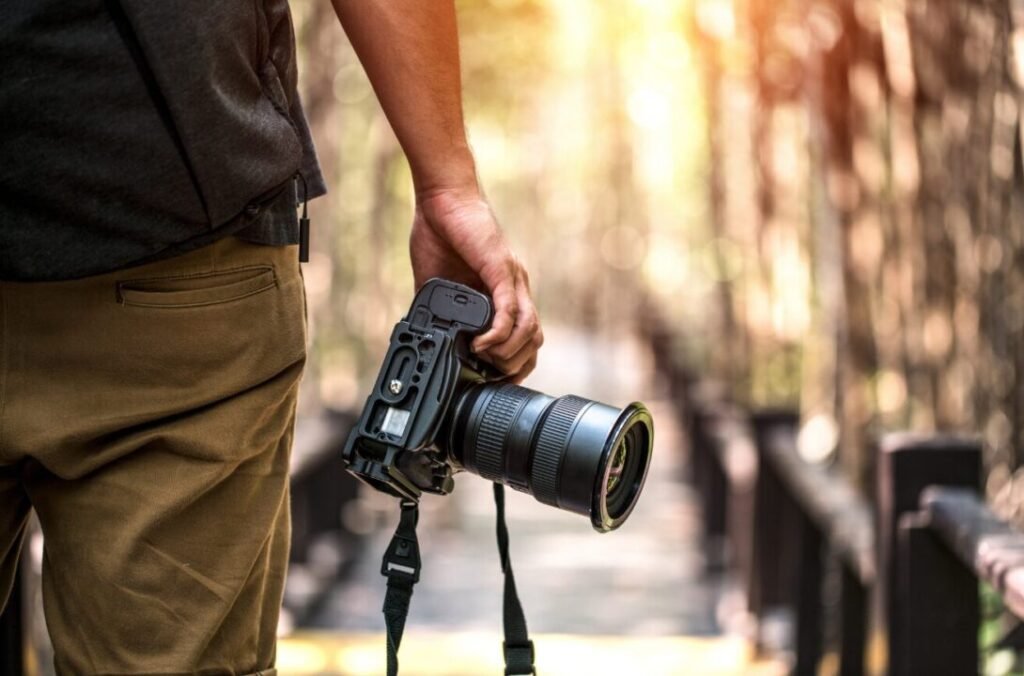Photography is an art, a blend of skill, timing, and creativity.
For years, the rules of the game have stayed largely the same — manual adjustments, careful lighting, and post-processing to achieve that perfect shot. But the arrival of AI has flipped the script.
It’s no longer just about a trained eye and a good camera. Now, algorithms can produce results that rival, and sometimes surpass, human efforts.
We’ve entered a new era where artificial intelligence changes how we capture and create images, offering solutions that traditional photography simply can’t match. From speed to creative control, AI is redefining photography in ways that are hard to ignore.
Here’s why AI photography is leaving its mark and why it just might be the future.
Speed and Efficiency
One of the most significant advantages of AI photography is its ability to streamline the entire process of image creation and editing.
In traditional photography, a significant amount of time is spent on manually enhancing images, adjusting lighting, retouching imperfections, and editing colors. With AI-powered tools, these tasks are handled instantly.
AI allows photographers and content creators to achieve professional-grade results in a fraction of the time. Whether it’s enhancing an image, removing unwanted elements, or adjusting the exposure, AI can handle it all with precision and speed.
This means that what once took hours can now be done in minutes, offering photographers more time to focus on creativity instead of getting bogged down by technical details.
Cost-Effectiveness
Traditional photography comes with a price tag. You need to hire a professional photographer, rent expensive equipment, and often pay for studio time.
It is not a secret that AI removes many of these costs.
AI tools can produce high-quality images without the need for an expensive setup. Whether you are a small business trying to create marketing content or an influencer looking for aesthetically polished shots, AI-powered platforms offer a much more budget-friendly alternative.
With AI-generated imagery, there is no need to rent physical spaces or equipment, making it ideal for startups, freelancers, or businesses on a tight budget.
Unlimited Creativity
AI is not limited by the constraints of reality. This opens up an entirely new realm of creative possibilities for photographers and digital artists.
AI-generated images can depict scenes that are either impossible to capture in real life or too costly to produce. From futuristic cityscapes to magical, otherworldly landscapes, AI can bring even the most ambitious creative visions to life.
Additionally, AI tools allow users to blend styles, apply unique filters, and experiment with a vast array of artistic effects that would be challenging to achieve through traditional means.
The creative freedom that AI provides is nearly limitless, as it enables photographers to push the boundaries of what is possible in the digital art world.
Accessibility
AI-driven photography tools are not just for experts — they are designed to be accessible to anyone with a creative mind.
Traditional photography can be intimidating for beginners due to its steep learning curve, involving complex camera settings, lighting techniques, and editing software.
AI simplifies this. With pre-built models and user-friendly interfaces, even individuals with little to no photography experience can produce professional-quality images.
Whether it’s an amateur trying to build a social media presence or a business owner creating visual content, AI levels the playing field by making advanced photography techniques accessible to everyone.
Consistency
Consistency is crucial, especially in fields like e-commerce, where brands need hundreds or even thousands of product images to have a uniform look.
Achieving this manually is a challenge, as lighting, angles, and other factors can change from shot to shot. However, AI excels at providing uniformity across large image sets.
Once an AI tool is trained on a specific style or editing pattern, it can replicate that across countless photos. This ensures that every image looks professional and consistent, whether you’re shooting for a product catalog, a lookbook, or a social media campaign.
The consistency that AI offers is often difficult to replicate with traditional methods, where even minor changes can disrupt the visual flow.
Time-Saving Automation
AI doesn’t just enhance photos; it automates tedious tasks that photographers and editors often find repetitive.
Sorting images, labeling them, resizing for different platforms, or even basic editing like color correction can be fully automated.
This time-saving aspect of AI is especially valuable for businesses that need high volumes of images for marketing, advertising, or product listings. By automating these processes, businesses and content creators can spend less time managing the logistics of photography and more time focusing on strategy and creativity.
AI lets you shift your focus away from the monotonous tasks to the ones that truly matter.
Personalization
One of the most exciting capabilities of AI photography is its ability to analyze preferences and trends to create personalized content.
Imagine being able to tailor images to specific audiences, making every image feel like it was crafted just for them.
In traditional photography, personalization can be time-consuming and costly. With AI, you can customize images with a few clicks, whether it’s for a marketing campaign targeting different demographics or creating content that resonates with a particular audience’s tastes.
The AI’s ability to rapidly adapt to individual preferences offers businesses an unprecedented level of precision in targeting their visuals.
Enhanced Editing Capabilities
AI isn’t just about automation; it can significantly improve the quality of editing. In traditional photography, achieving the perfect image requires advanced skills in Photoshop or Lightroom.
With AI-powered tools, this process becomes seamless.
AI can automatically sharpen details, enhance colors, balance lighting, and even remove unwanted elements like power lines or bystanders from a photo. This dramatically improves the overall quality of an image, even without the involvement of expert editing skills.
The AI does most of the heavy lifting, while the photographer can focus on refining the creative aspects.
Low-Light and Challenging Environments
Traditional photography struggles when working in low-light conditions or when the environment isn’t ideal. Without the proper equipment or lighting setup, images can turn out grainy or underexposed.
AI photography excels in these situations. With intelligent algorithms that adjust brightness, contrast, and sharpness, AI can transform poorly lit photos into crisp, clear images.
This not only saves time but also eliminates the need for additional lighting equipment, allowing photographers to capture great shots in difficult environments without compromising on quality.
Customizable Imagery
One of AI’s strongest advantages over traditional photography is its ease of customization. With traditional methods, customizing a set of images to match specific branding or style guides can be a labor-intensive task.

AI simplifies this process. You can easily adjust colors, add or remove elements, and even change the composition of the image to align with your artistic needs or brand identity.
This flexibility offers businesses and artists alike more creative control over their content, allowing them to tailor images to their specific vision without starting from scratch.
The Future is Here
AI photography isn’t about replacing traditional methods — it’s about evolving the craft and opening new doors.
The tools that AI provides offer unprecedented speed, creativity, and personalization, allowing photographers, businesses, and even amateurs to reach new heights. While traditional photography will always hold its place in the world of art, AI presents an opportunity to expand what’s possible, breaking down barriers that used to limit visual creation.
I’m not an advocate of AI simply for the sake of technology. But the clear advantages it brings to the table — whether through efficiency, customization, or enhanced creative possibilities — are undeniable.
It’s not about choosing between AI and traditional photography. It’s about leveraging both to shape a future where creativity has no limits.
